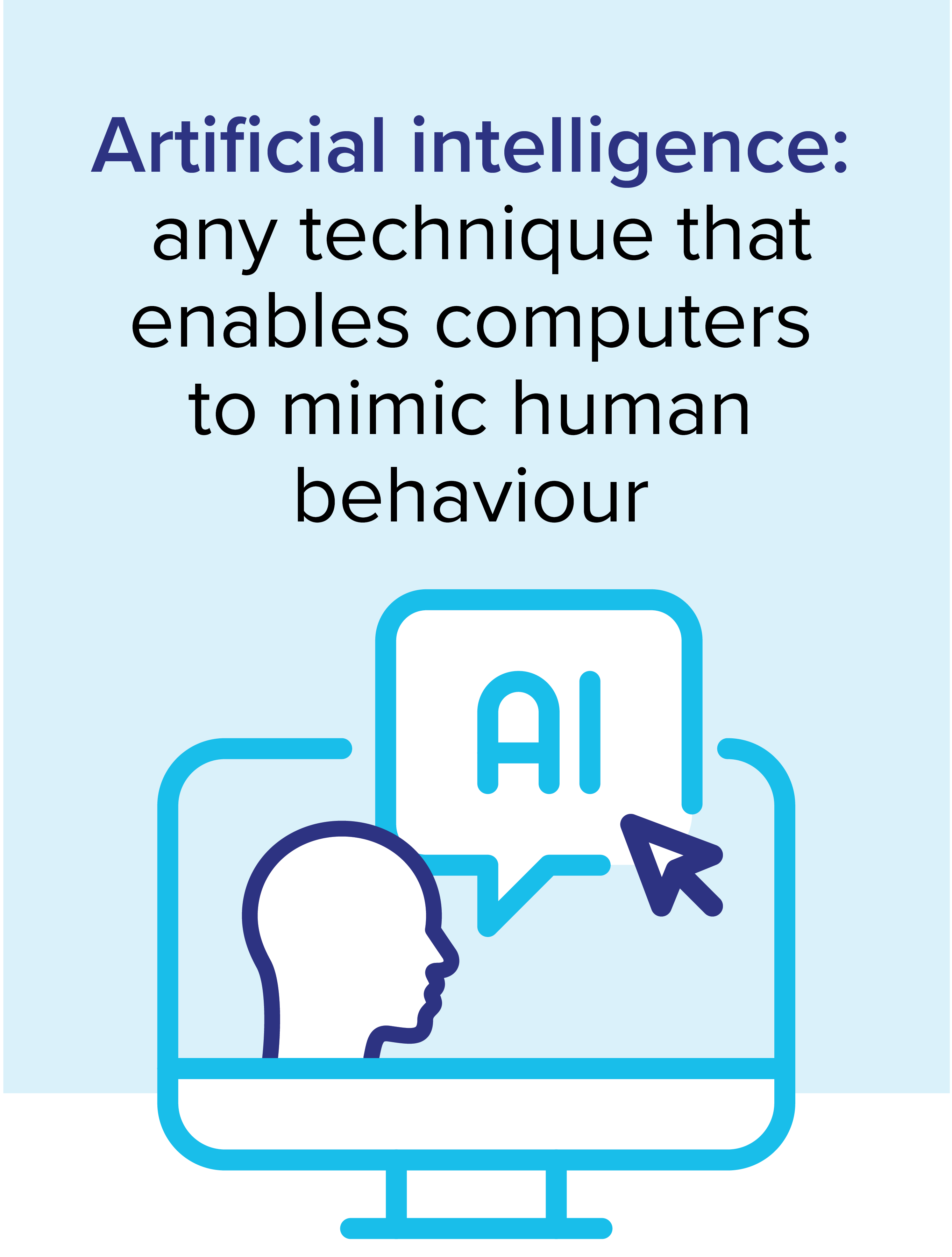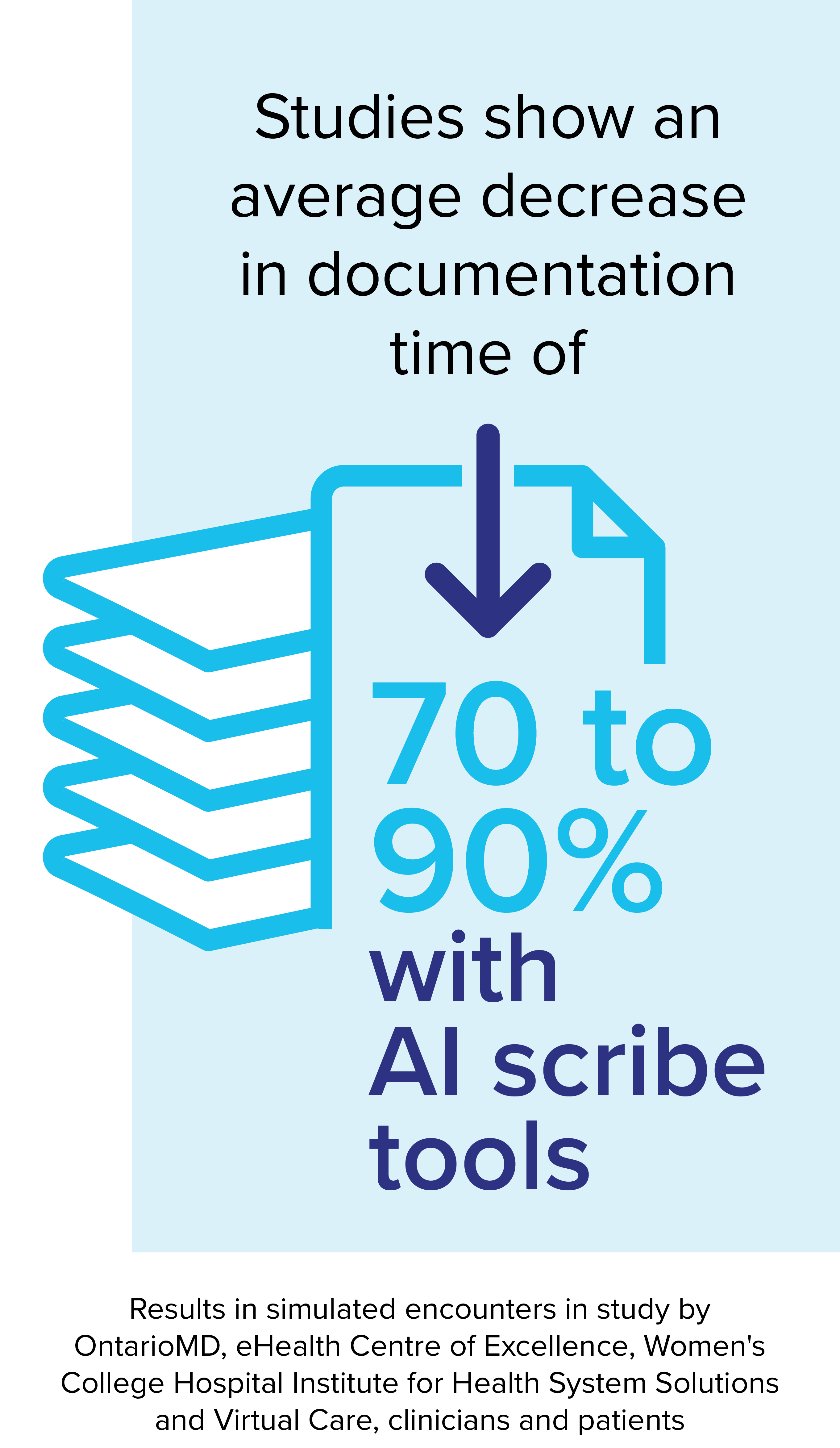Dive into some of the most asked questions about this digital tool
You’ve no doubt heard about “AI scribes” lately, and how they could be part of the solution to help decrease your administrative burden and improve your well-being.
But what is AI scribe technology? What do we really know about it, and how could it be useful to you?
We attended a webinar hosted recently by the Ottawa Health Team to learn more. Your colleagues raised some important questions about AI scribes. In addition to the other resources we provide, we’re highlighting some of those questions – and the answers given – to help you decide if this technology is right for you.

1. What is it, and how can I use it in my practice?
An AI scribe is a digital tool that’s designed to automate time-consuming tasks, like data entry or note-taking. AI scribe technology uses artificial intelligence to summarize or capture spoken conversations and compile them into electronic and clinically relevant medical notes.
This can include summarizing notes from patient visits and identifying follow up administrative actions, such as generating referral letters. There’s typically a monthly or annual fee paid to license an AI scribe tool, which can range depending on what agreement you or your practice sign and how much functionality you want the tool to have.
2. What are its potential benefits and limitations?
AI scribes show promise in reducing administrative burden, cognitive fatigue and afterhours charting, all while producing a good medical note. Clinicians who have used AI scribe tools in early tests report that they significantly reduced time spent documenting.
Results from a provincial study into AI scribe technology have also found they save time in documenting. The study’s competitive analysis of six different tools has shown an average decrease in documentation time of 70 to 90 per cent with AI scribe tools, when compared to a physician completing the documentation on their own.
The study was completed by OntarioMD, eHealth Centre of Excellence, Women’s College Hospital Institute for Health System Solutions and Virtual Care, with a number of clinicians and patients participating. It was funded by the province. The OMA sees AI scribes as a vital tool to help you ease your administrative burden, and we’re currently lobbying the province to support the roll-out of this technology across Ontario. We expect to hear more in September.
It’s important to understand that AI scribes do still have limitations. These include difficulties in creating medical notes for certain clinical scenarios, equity considerations, a lack of integration with some EMRs and ongoing data privacy and security concerns.

3. What are the legal considerations of using this technology in a practice?
When you use products and services that incorporate artificial intelligence, you have a responsibility to make sure they follow existing domestic and international privacy legislation and regulation.
This includes:
4. Do AI scribe tools work when different languages are being spoken?
This depends on the AI scribe software you’re using and its functionality. For example, some work with just French and English. Others can pick up dozens of languages when set in multilingual mode, and either scribe in that language or translate the notes into whatever language you want in real time. Make sure to read the details when signing up for a tool.
5. Is it easy to adapt an AI scribe tool to different EMRs?
There are AI scribe tools that can extract content from what they transcribe and apply it to the appropriate fields of an EMR in a structured manner. Which tools can do this and how well they do it depends on the AI scribe in question, its functionality and your EMR. Make sure you read the fine print carefully when looking at different AI scribes and ask questions about how they can be adapted to different EMRs.
If you’re considering purchasing an AI scribe solution, we’re compiling a list of vendors in Ontario that follow domestic and international privacy legislation and regulation. Stay tuned for detailed pilot results and the curated list of recommended vendors.
In the meantime, read our AI scribe guidance for considerations to keep in mind before signing a contract with an AI vendor.